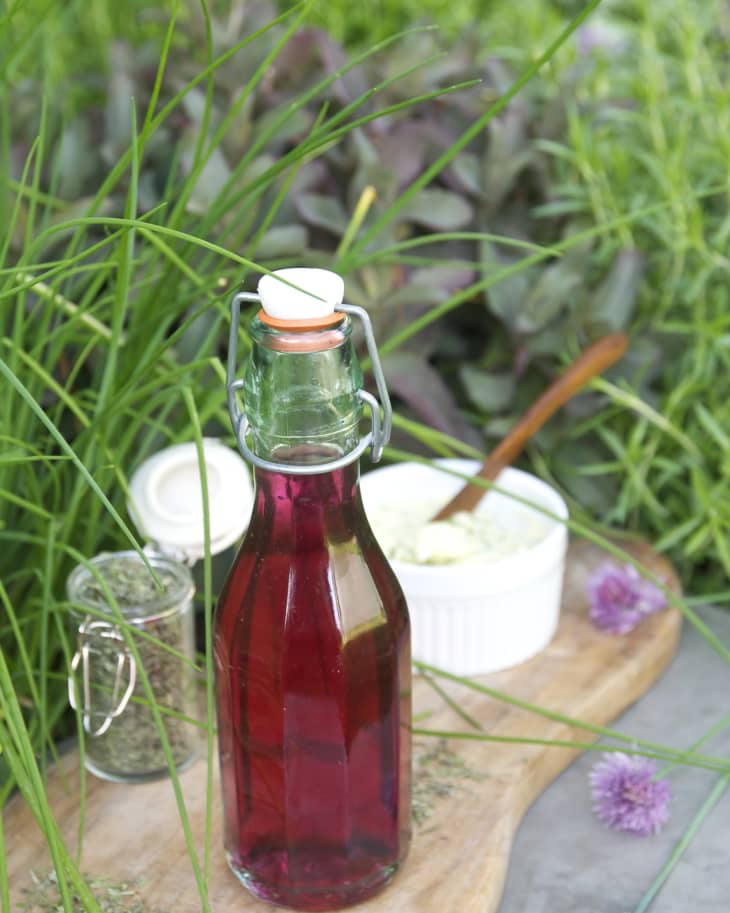How to Preserve Chives
Who doesn’t want a dollop of melted chive butter on their grilled steak or a dash of zesty chive vinegar on their salad in the dead of winter? I love blowing my guests away at a dinner party in December with flavors that evoke the smells, memories, and tastes of summer. Chive is a garden staple that can be preserved and used in many ways.
Finding ways to enjoy the vibrant flavors of summer all year-round is one of the most rewarding aspects of gardening. I almost get more excited thinking about ways to preserve fresh herbs than I do growing them!
Whip up Some Chive Butter
I love making chive butter. It is so simple to make and freezes exceptionally well. Finely chop about a 1/4 cup of
fresh chives
Make Chive Oil
There is nothing like dunking warm, crusty bread into chive oil with a little salt and pepper. I make my chive oil by blanching (not mandatory, but recommended) a handful of coarsely chopped chives; I boil them for 10 seconds, transfer them to an ice bath, and pat them dry. Purée them in a blender, along with 1/2 cup of good-quality olive oil, and a pinch of salt. Refrigerate the oil mixture overnight and strain into a clean jar the next day. Use it within a week.
Emma also wrote a post on how to make herb-infused olive oil, so read on for more detailed instructions.
Steep Flowers for Chive Blossom Vinegar
Wash freshly cut chive blossoms in cool water and dry them thoroughly. I use a salad spinner. Fill a mason jar 1/2 to 2/3 full with the chive blossoms. Top with white wine vinegar, seal, and store in a cool, dark spot for two weeks. Strain out the solids, pour into a clean bottle, and toss this bright pink, lightly onion-flavored chive blossom vinegar over all of your favorite salads.
Freeze Your Chives
Of course, there is no substitute for enjoying freshly cut chives, but if you have an abundance, freezing is always a possibility. I tend to use frozen chives in soups, sauces, and stews, since the flavor of the chives remains consistent over time, but the texture tends to suffer after thawing. In this situation, I wash and finely chop the chives before freezing. After this, you have a couple of options:
- Fill ice cube trays with chopped chives. Add just enough water or olive oil to cover the herbs and freeze until solid. Check out Faith’s post on how to freeze and preserve fresh herbs in olive oil.
- Dry-freeze your chopped chives by either vacuum-sealing the herbs or by simply putting them in a freezer bag and removing the air as best you can. I have used a straw in this situation.
Dehydrate or Dry Chives
Although I have read many posts describing the process of drying chives, I find this method tricky and have not had the best success with it. The color often drains out, as does the potency of flavor. The texture can also get a little “woody.”
If you have a technique to deliciously dehydrate chives, please share your thoughts, as this is something I’d really like to accomplish in my kitchen.
Do you have any other favorite ways to preserve this garden staple?
